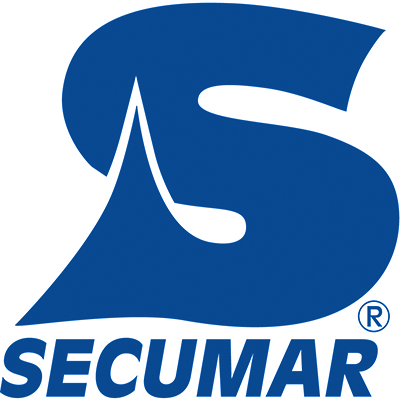
Differences between inflatable and inherent buoyancy lifejackets
"Inflatable" versus "inherently buoyant" lifejacket"?
The current European Standards differentiate buoyancy aids and lifejackets by their buoyancy force Newton (N). All materials of lower weight than water produce buoyancy. Closed cell foams of polyvinyl chloride (PVC) or polyethylene (PE) are used for buoyant material. (SECUMAR uses SECUMAR SOFT foam). Atmospheric gas or others as carbon dioxyd (CO2) or nitrogen (N2 ), produce the inflatable buoyancy. CO2 has proved to be adequate because of its properties of being non-toxic, non-inflammable, and because it can be stored in small disposable cylinders.
Some basics on physics …
Anyone floating in the water requires a minimum of buoyancy force to keep his head on the water surface as well as to turn his body to keep his nose and mouth above the surface. The distance from water surface to the mouth is called "freeboard", and this distance may be influenced by the clothes worn. An undressed adult will achieve this freeboard with a buoyancy of 100 Newton (N); (10 N = 1 daN = DecaNewton equal to 1 kp. As a safety margin and to ensure turning of the unconscious wearer by the lifejacket, 150 N is required. An inherently buoyant lifejacket of this buoyancy would be much too bulky.
Comfort or discomfort for the wearer …
The correct form of lifejacket is essential. It would be just a compromise to try to maintain the freeboard and turning property by reducing the buoyancy to a certain extent. It can be achieved by the design of chest buoyancy chambers and collars in the category 100 N. However, this design is hardly suitable for inherently buoyant material because the greater buoyancy becomes too bulky. And, the permanent wearing of bulky inherently buoyant lifejackets is unacceptable.
The "inflatable" means a small pack.
Only the inflatable lifejacket supplies sufficient buoyancy in the 150 and 275 N categories. The deflated buoyancy chamber is just a small pack and offers comfort of wear. The inflator (manual or automatic) can be activated any time. The lifejacket can be combined with other life saving appliances such as a safety harness.
‘To be on the safe side …’
Inflatable and inherently buoyant lifejackets are genuine alternatives. The inherently buoyant jacket will never lose its airtightness, does not require maintenance at regular intervals, cannot activate inadvertently if in contact with water, and is less expensive. The decision, however, should be made subject to the range of application as defined in the European Standards. If the wearer is exposed to rough sea, foul weather, wearing foul weather clothing, and wants to be on the safe side, he will decide on the inflatable lifejacket.

